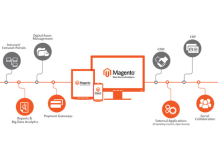In eCommerce and online shopping, last-mile delivery is the last frontier. It’s the point where the product meets the customer, and it’s where all the hard work of supply chain management pays off.
But last-mile delivery can also be a logistical nightmare.
Let’s explore solutions for optimizing last-mile delivery, so you can improve customer satisfaction, reduce costs, and streamline your operations.
Innovative Solutions for Last-Mile Delivery
To tackle last-mile delivery challenges, eCommerce businesses are turning to innovative solutions:
LTE Routers
LTE routers are becoming increasingly popular in last-mile delivery. An LTE router uses cellular networks to provide reliable internet connectivity in remote areas. This means delivery drivers can stay connected to the network, even in areas with limited or no network coverage.
One example of an LTE router is Cradlepoint routers. These routers are perfect for transportation, including last-mile delivery. They can withstand harsh environments, have built-in GPS, and support multiple networks and carriers.
Delivery Drones
Delivery drones have long been touted as a game-changer in last-mile delivery. These aircraft can bypass traffic congestion and deliver packages directly to the customer’s doorstep. While drones are still in the testing phase, many companies are investing in this technology to improve delivery times and reduce costs.
Micro Warehouses
Micro warehouses are small, decentralized warehouses in urban areas. These warehouses act as hubs for last-mile delivery, allowing delivery drivers to pick up packages from a central location and deliver them more efficiently. By using micro warehouses, online businesses can reduce the distance delivery drivers travel, leading to faster and more efficient service.
Collaborative Delivery Models
Recently, collaborative delivery models have gained traction as a cost-effective and efficient solution for last-mile delivery. These models use existing resources, such as local businesses or individuals, to assist in the delivery process.
For instance, crowdsourced delivery platforms connect businesses with independent drivers available to make deliveries on demand. By leveraging collaborative delivery models, businesses can tap into a wider network of available drivers, optimize route planning, and reduce delivery costs. Additionally, these models contribute to the growth of local economies by empowering individuals and small businesses to participate in the delivery ecosystem.
Delivery Lockers
Delivery lockers are secure, self-service stations where customers can pick up their packages whenever it’s convenient for them. These lockers are typically in public places like train stations or shopping centers. By providing customers with a convenient pickup location, businesses can reduce the number of failed deliveries and improve customer satisfaction.
Predictive Analytics
Predictive analytics use machine learning algorithms to analyze large amounts of data and predict future events. In last-mile delivery, predictive analytics can optimize delivery routes, predict delays, and allocate resources more efficiently. By using predictive analytics, businesses can reduce delivery times and improve customer satisfaction.
Real-Time Tracking
Transparency and effective communication are crucial elements in last-mile delivery. Customers want to stay informed about the status of their orders and track them in real-time.
Implementing robust real-time tracking systems allows customers to monitor the progress of their deliveries and receive timely notifications about estimated delivery times. Businesses can leverage this technology to provide accurate updates to customers in case of delays or delivery schedule changes. Seamless communication through multiple channels, such as SMS notifications, mobile apps, or chatbots, ensures that customers are always well-informed and can plan accordingly, enhancing their overall delivery experience.
Optimizing last-mile delivery is critical for eCommerce businesses looking to succeed in the competitive world of online shopping. By using innovative solutions such as LTE routers, delivery drones, micro warehouses, delivery lockers, and predictive analytics, businesses can improve delivery times, reduce costs, and streamline their operations.







